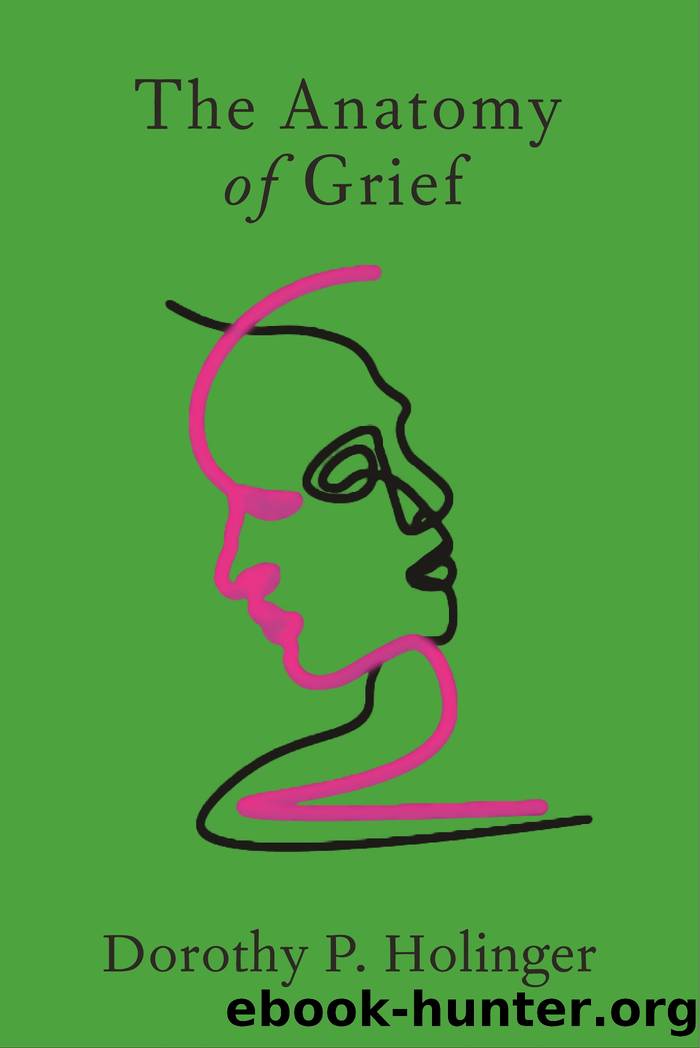The Anatomy of Grief by Dorothy P. Holinger

Author:Dorothy P. Holinger
Language: eng
Format: epub
Publisher: Yale University Press
Published: 2020-11-15T00:00:00+00:00
âOn the Ides of Marchâ denarius, depicting Marcus Junius Brutus on one side, and, on the other, a pair of daggers and liberty cap representing the assassination of Julius Caesar. Classical Numismatic Group, Inc., http://www.cngcoins.com.
On that fateful Ides of March day, Caesar is stabbed by his senators and bleeds to death on the steps of the Senate. How was my mother able to connect the date of her birth, and the date and method of Caesarâs death, to the way she herself would die? Like Caesar, she bled to death. She endured a procedure meant to restore circulation in her leg, but it went very wrong. Caesar died at the hands of his assassins, but my mother died undergoing a medical procedure intended to help: although sedated, she somehow managed to pull a stent out of her arm not once, but twice.
My husband and I visited my mother the night before her procedure. We also talked with her cardiologist, who was confident and optimistic. A telephone call to me the next afternoon was the first hint of trouble. My mother had pulled the stent tubing out of her arm and could lose her hand if the problem was not corrected. âGive the team an hour,â the cardiac fellow suggested. We didnât wait, but headed to the hospital. Calling before we left, the news was that things were âback on track.â
At the hospital, the doors to the special procedures room were open. Even though we were told not to go in, I caught a glimpse of my mother on the table. The attending physician said all was proceeding on course, and they would call us in several hours after the procedure was over.
We drove to a cousinâs who lived very close by. As we walked in, she told us the hospital had called to say that the situation had turned critical.
We drove back and went immediately to special procedures. No one stopped me this time. The double doors opened, and I walked in to see blood on the teamâs shoes and on their scrubs. Although my motherâs arms had been strapped to boards, she had managed to pull out the stent again. The chalky color of her face was in stark contrast to the blood on her arms and the wooden supports to which her arms were fastened. Walking closer, I heard her nearly inaudible moans.
I bent down to her and said, âIâm here.â
Her response, my dying motherâs last words, was âLet them let me die.â
And I did. I told the team to stop. They wrapped her and wheeled her out of special procedures. My husband and I were told to wait until they had her settled back in her hospital room.
In a waiting area, I paced back and forthâinnumerable times, it seemed. To my husband, who was sitting down, I said, âSheâs dying.â
When we went into her room, it was then that time stopped for me. There was no time. As it had been so long ago with my mother and me, she and I were in a space where time, and even words, did not exist.
Download
This site does not store any files on its server. We only index and link to content provided by other sites. Please contact the content providers to delete copyright contents if any and email us, we'll remove relevant links or contents immediately.
They Both Die at the End by Adam Silvera(9724)
Thirteen Reasons Why by Jay Asher(8800)
The Space Between by Michelle L. Teichman(6866)
Suicide Notes by Michael Thomas Ford(4765)
Tuesdays with Morrie by Mitch Albom(4696)
Suicide: A Study in Sociology by Emile Durkheim(2975)
The Checklist Manifesto by Atul Gawande(2782)
Tuesdays With Morrie by Mitch Albom(2697)
In the Woods by Tana French(2535)
Bossypants by Tina Fey(2474)
Robin by Dave Itzkoff(2387)
Olive Kitteridge by Elizabeth Strout(2315)
No Ashes in the Fire by Darnell L Moore(2298)
Reservoir 13 by Jon McGregor(2244)
End of Days by Sylvia Browne(2120)
All Things New by John Eldredge(2106)
Bus on Jaffa Road by Mike Kelly(2104)
Scar Tissue by Anthony Kiedis(2093)
No Time to Say Goodbye(2063)
